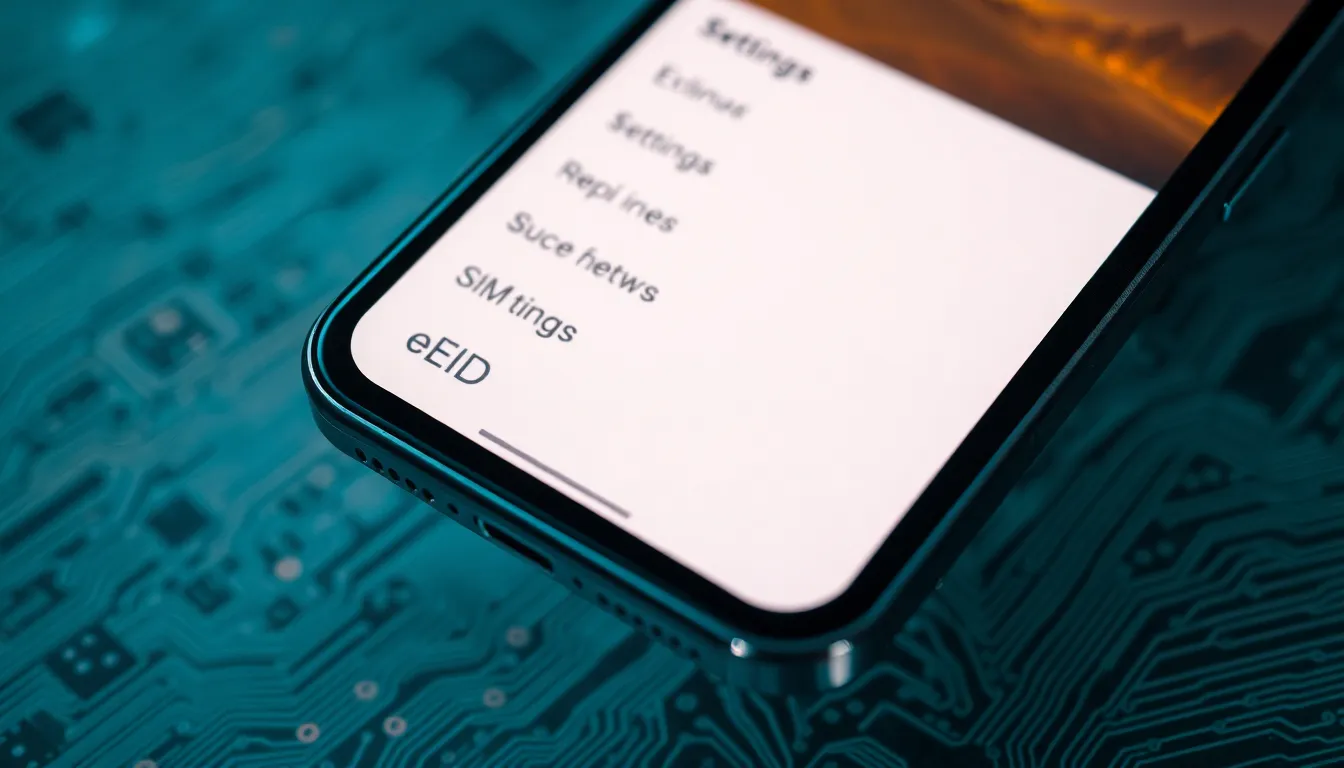Table of Contents
ToggleWhen it comes to iPhones, there’s a lot of tech jargon floating around. But if you’ve stumbled upon the term “EID,” you might be scratching your head. Is it a new app? A secret feature? Or just another acronym to add to your tech vocabulary? Fear not, because understanding EID is simpler than explaining why your phone’s battery drains faster than your enthusiasm for Monday mornings.
What Is Eid in iPhone?
EID stands for “eSIM identifier” in the context of iPhones. This unique identifier is crucial for devices using eSIM technology, allowing users to activate cellular plans without a physical SIM card. Newer iPhone models, such as the iPhone 14 and later, support eSIM capabilities, enhancing user flexibility.
EIDs are assigned to each eSIM activated on an iPhone. This number helps carriers manage and differentiate between various eSIM profiles. Users can easily check their EID by navigating to Settings, selecting General, then About, and finally scrolling down to find the EID listed alongside other device identifiers.
Understanding EID simplifies the process of managing mobile service plans. If a user wants to switch carriers, they’ll need to provide the carrier with their EID to facilitate activation. With the increasing adoption of eSIM technology, knowing the EID becomes more vital, especially for frequent travelers or those looking to change providers.
Device activation and management benefit greatly from this identification system. Many consumers appreciate the streamlined process of activating a mobile network directly through their iPhone settings. Overall, EID is a significant component of modern mobile technology, especially for users of the newest iPhone models.
The Importance of Eid

EID plays a crucial role in the context of eSIM technology. This unique identifier facilitates the management of cellular connections in modern devices.
Significance in Technology
EID serves as a key component of eSIM functionality. This identifier allows carriers to recognize and manage different eSIM profiles effectively. Each EID corresponds to a specific eSIM, aiding users in accessing mobile service plans seamlessly. Enhanced flexibility results from this technology, enabling users to switch carriers or add plans without physical SIM cards. Growing adoption of eSIM technology across devices like the iPhone 14 illustrates its increasing relevance. Recognizing the importance of EID contributes to optimizing mobile connectivity for users.
Cultural Meaning
Eid, in a broader cultural context, signifies more than just technology. It represents celebration, community, and renewal within various cultures, particularly among Muslims. This festive occasion reinforces family bonds and encourages charitable giving. Special meals, prayers, and gatherings mark the time, enhancing community spirit. Understanding this cultural significance enriches the appreciation of EID beyond technological aspects. Individuals engage with shared values and traditions during Eid, promoting unity and joy among diverse communities.
How Eid Works in iPhone
EID, or eSIM identifier, plays a crucial role in how iPhones utilize eSIM technology. This unique identifier allows users to efficiently manage their cellular plans without needing a physical SIM card.
Integration with Apple Services
Integration with Apple services enhances the eSIM experience on iPhones. Customers can easily switch between carriers through the iPhone’s settings. Settings provide a user-friendly interface for managing eSIM profiles associated with the EID. Users benefit from streamlined access to services like Apple Music or Apple TV+ while traveling internationally. Such integration simplifies the process, as carrier activation can occur seamlessly. Various apps also recognize the EID, facilitating smooth transitions between plans. As users navigate their subscriptions, Apple ensures that the eSIM technology complements overall device functionality.
User Accessibility
User accessibility is a priority for iPhone users managing their EIDs. Finding the EID within device settings requires only a few taps. Users can quickly navigate to Settings, then to Cellular, and view their eSIM details. This straightforward access reduces the frustration associated with managing mobile services. When users switch carriers or add new plans, they can rely on their EID to facilitate changes. Unfortunately, not all carriers support eSIM technology, emphasizing the importance of checking compatibility first. Frequent travelers appreciate this convenience, as it allows them to adapt their devices to various networks effortlessly.
Features of Eid on iPhone
EID on iPhones provides significant functionality, enhancing the user experience through various features.
Customization Options
Users can personalize eSIM profiles on their iPhones. Changing plan names helps in easily identifying different profiles. Switching between multiple carriers occurs smoothly, catering to individual needs. Adjusting settings allows for tailored experiences, ensuring optimal connectivity. Each eSIM supports unique configurations that enhance usability. Making selections ideal for travel or regional use becomes simple, offering flexibility. Organizing plans is straightforward, facilitating easy access during usage.
Notifications and Reminders
Notifications play a vital role in managing eSIM alerts. Users receive prompts about plan changes or data usage limits directly on their devices. Setting up reminders for plan renewals ensures uninterrupted service. Notifications enable proactive management of cellular connections, promoting efficiency. Each alert supports timely decisions regarding data and call options. Staying informed about carrier details helps avoid unexpected charges. Overall, these features enhance the user’s ability to maintain control over their mobile service.
Understanding EID in the context of iPhones is essential for users navigating the world of eSIM technology. It plays a crucial role in managing cellular plans seamlessly without the need for a physical SIM card. With the rise of eSIM adoption in newer iPhone models, users can enjoy greater flexibility and convenience.
Moreover, appreciating the cultural significance of “Eid” adds depth to the conversation, highlighting themes of community and celebration. This dual perspective on EID enriches the overall user experience, blending technology with meaningful traditions. Embracing both aspects fosters a greater connection to the device and the world around it.




